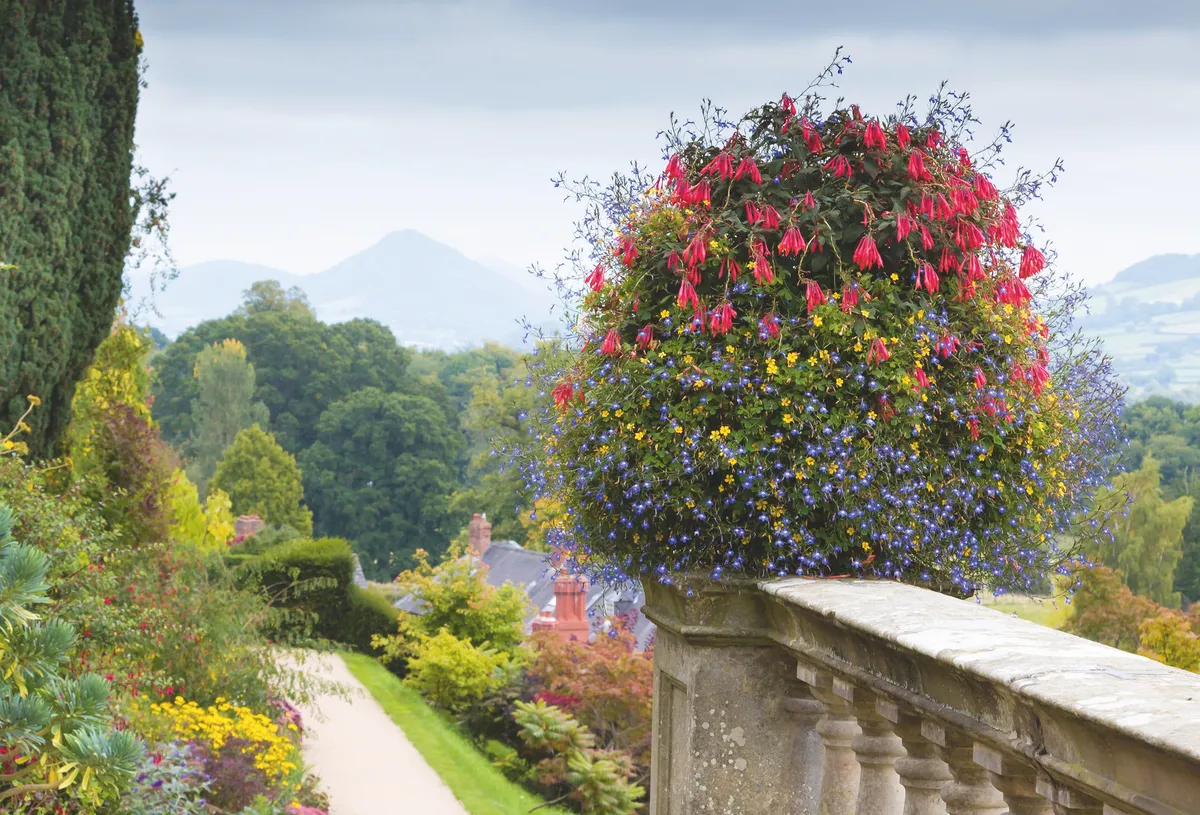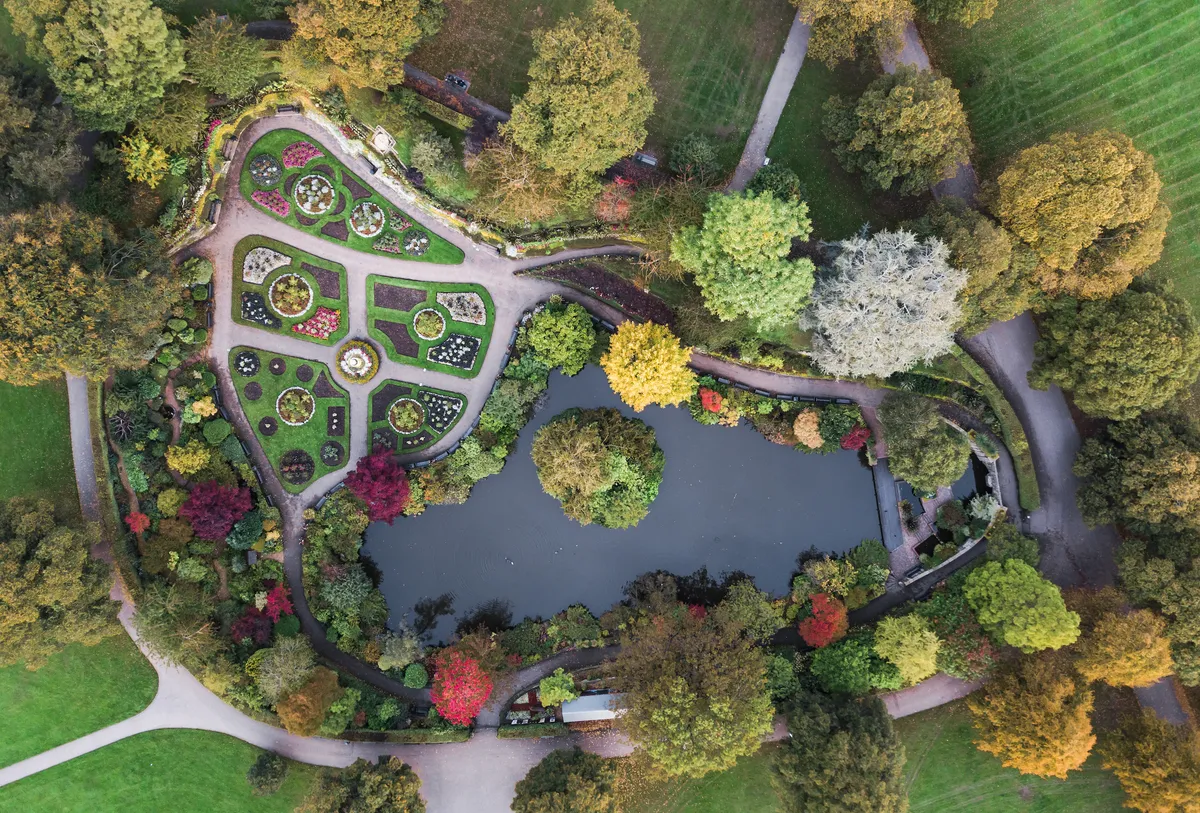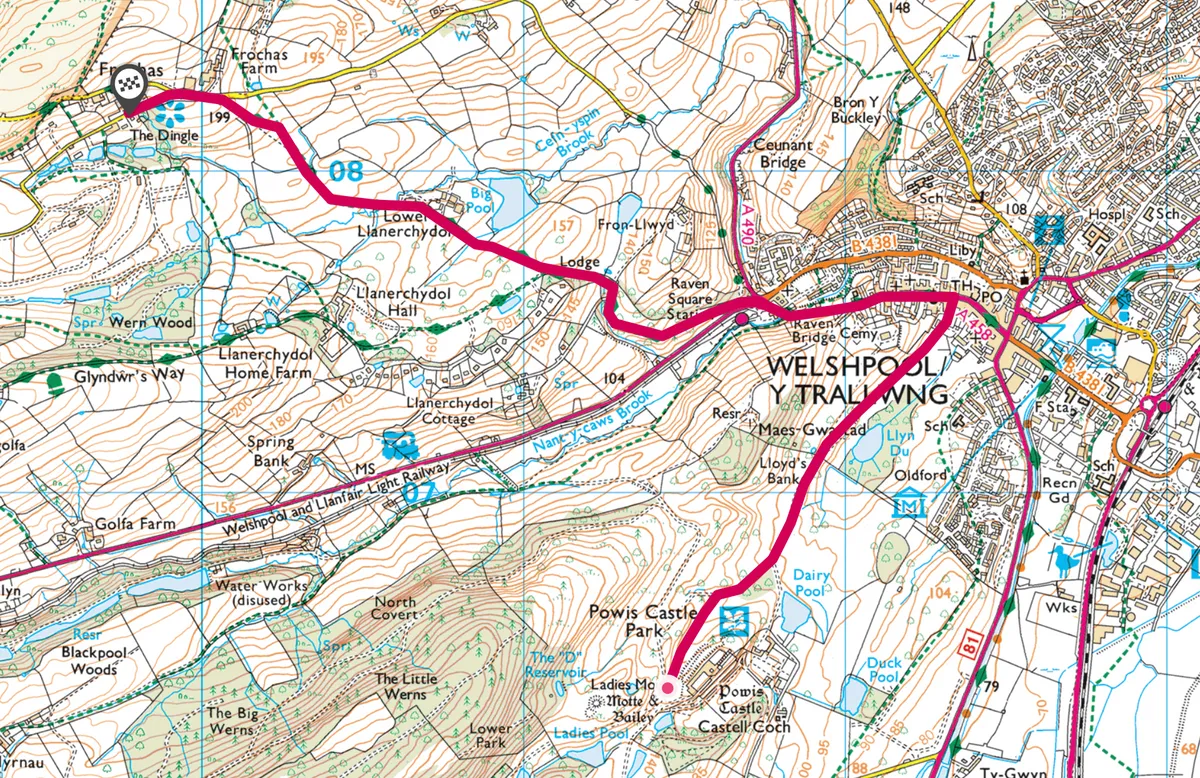Sun-warmed bricks coax heady scents from the roses. Peacocks wail. Apples blush. It’s a feast for all the senses when this south-facing garden is at its best in late summer.
It’s the time when acers begin their slow burn and the smoke bush smoulders. When Dahlias, Rudbeckias, katsuras, Colchicums and Penstemons roll out spice-market colours that are richer and warmer even than the sandstone cliff from which the garden has been encouraged.
On top of the cliff is Powis Castle, which inside is dark, polish-scented and woody. Its courtyard boasts all the usual National Trust amenities – a tearoom, gift shop and toilets – but note that booking is advisable at busy times, though disabled access (temporarily adapted due to Covid restrictions) should be fully back on track by now.

Late summer at Powis Castle and Garden
Although 13th century in origin, Powis Castle is a mishmash of modernisations and so too is the garden, though here it’s the Edwardian formal taste and attentions of Lady Violet Herbert (former Countess of Powis) that prevail.
There is something of the French coastal town of Biarritz in the terraces and balconies, something hot and languid. Secreted in them is an aviary redolent of Kew, with potted ferns and blue shade. Alcoves, too, offer retreat from blistering heat. Relax there while letting your eyes trickle over the hedge-edged open lawns and on to the hills beyond – Long Mountain and the Breiddens on the border.
You may also like:
But now is not the shrill clamour of June, nor winter when the pollarded yew tumps come into their own. Now is the mellowing time, when the light has a hint of old gold. When a flush of warm colour fans the terraces, the woodland grasses are a shimmering ocean of seed-heads and the orchard fruit is turning rosy.
Powis Castle and Garden to Dingle walk
To experience an intimate and altogether different type of garden, however, you might consider embarking upon the short walk between Powis Castle and Dingle.
1. Fallow rut
Leave Powis Castle via the only public right of way, heading north-east through the
Powis Estate. Look out for fallow deer – they will be rutting in September.
2. Timber town
After about a mile you will reach Welshpool. Turn left on to the A458, past the 16th-century Talbot Inn, looking out for the older timber-framed cottages that equal the castle in age.

3. Old oaks
Taking care, cross the roundabout and turn left behind the gatehouse on to Glyndŵr’s Way. The National Trail meanders across Llanerchydol parkland, which
is home to many ancient pedunculate oaks.
4. Farmland foray
Take the footpath right, pass a farm, round a barn, cross a footbridge and stile, then keep right along a ditch to a stile obscured by a fallen holly. Climb it and cross the cornfield and stile on to the road.
5. Down in the dell
Turn left for Dingle Nursery and Garden. Dingle Nursery is a delight and Dingle Garden (which has a modest entry fee) is an Eden. Here is a steep-sided dell, somewhat Japanese in spirit, with shade-giving trees, shrubs and ferns, and
a lake rich in frogs with tranquility at the bottom.
Powis Castle and Garden to Dingle map
Powis Castle and Garden to Dingle walking route and map

